Interview: Blues Guitarist Sean Chambers Discusses His New Album, 'Live From The Long Island Blues Warehouse'
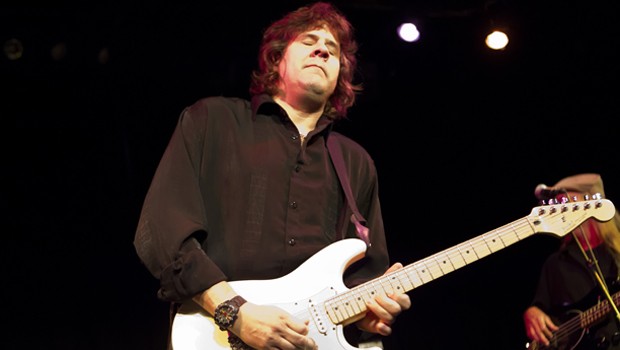
Sean Chambers is no stranger to the Long Island Blues Warehouse radio show.
After a successful appearance last year, he and his band — drummer Paul Broderick, bassist Tim Blair (Note: Jeff Artabasy, formerly with Dan Toler, recently became Chambers’ bass player) and harmonica player Gary Keith — were invited back for an encore in 2011.
Chambers saw an opportunity: bring in an audience, record in a studio setting, properly miked for sound, and mix the tracks for a live album. The result is the aptly titled Live From The Long Island Blues Warehouse.
Chambers first gained attention as guitarist and bandleader for blues legend Hubert Sumlin, with whom he toured from 1998 until 2003. He also carved his own niche as a solo artist, with three studio albums to his credit: Strong Temptation, Humble Spirits and Ten Til Midnight. Chambers’ brand of blues is difficult to classify, as his influences include elements of rock 'n' roll, plus Chicago, Texas and Delta styles, which he discovered incrementally when he was randomly introduced to Jimi Hendrix’s music — his first taste of blues guitar.
You recorded a live album in a studio interview setting. Did it feel like a live gig or a radio show?
It was 50/50, not like playing a festival where there’s a ton of energy and you’re going like gangbusters. The format was such to where we’d play a song and talk, and the energy level goes down again, and you kick into another song. That said, the crowd knew that we were doing a live CD and they made a lot of noise when we did play. They screamed and hollered, so that vibe was there. It’s a big studio and very nice and we set up like we would at a gig.
How did you set up for this in-studio live gig?
Get The Pick Newsletter
All the latest guitar news, interviews, lessons, reviews, deals and more, direct to your inbox!
When you do a studio album, you usually isolate everything because of bleed-over. When you do an album, you start with the drums and you want to get a good, fat drum sound, but if the guitar amps and bass amps are coming through the drum mics, when you mix the drums and isolate the drums, you’ll hear guitar and bass in the background. So when you do a studio CD, a lot of times the bass will run direct into the board so there’s not really an amp, the drums are miked in one room, and they might put the guitar amp back in another room and close the door. Everybody has headphones on, and when you mix there’s no bleed-over and you can get a really good, clean sound.
When we did this album in the studio, we didn’t set up that way. We set up just like when we play live and everything was miked in one room, so when we went to mix it there was some bleed-over. However, we were able to mix it like a studio album, but there were no overdubs. If we were doing a studio CD, I’d be sitting there picking apart my guitar solos, “I can do that better, I can sing that better,” and you go in and overdub those parts. Everything that you hear on this CD is what you hear live, but we were able to mix it and get some good sounds. It is live, so I’m not looking for perfection. You want it to have raw energy.
How were you miked?
They put a mic on everything — on the kick drum, on every drum, the floor tom, the snare, a couple of overhead mics above the cymbals — so there were probably seven or eight mics on the drums. The bass, I believe, ran direct into the board but it was still played live through a bass amp, so that bleed-over was still going through the drum mics. I used two amps in stereo, so there was a mic on each of the guitar amps.
Has your approach changed over time when performing these tracks?
Yes, especially songs like “Dixie 45” and “Strong Temptation.” Those songs appeared on my first CD, which we did in 1998, and we did some overdubs and tried to perfect the songs the best we could. I have a different band now; we’ve all grown as musicians and players. The whole approach is different. As a guitarist, yes, I’ve grown and matured as a player. It’s always a work in progress. I think that my style has changed a little bit. Even though it’s the same songs, I’m sure there’s a different energy and they’re not played exactly the same, either. For the most part it’s the same arrangements, but the solos aren’t the same and the vibe of the songs are different.
You began playing at age 10 and Jimi Hendrix was your idol. When you were so focused on one artist, at what point did you find your own style?
I was influenced by rock 'n' roll when I was a kid, and when I was 10 years old and started playing, I hadn’t discovered blues yet. I was playing power chords and really wanted to jam out on guitar, but it wasn’t what I thought it would be. I was still searching for something. I was in the car with a buddy of mine, he was 16 and had his driver’s license and I was 14. He put in Jimi Hendrix’s “Red House,” and when I heard that sound I said, “What is that? Who is that? What kind of music is that?”
I was used to playing power chords and rhythm, and he was just wailing away and singing. He goes, “That’s blues music,” and I said, “Man, that right there is what I want to do.” It clicked in my head. With that discovery, I listened to Jimi in my teen years. His catalog is so huge that every time I’d think I’d heard everything, I’d discover another video or another live album. I was so moved by his music. A few years after that, I started discovering the Texas guys. I started switching gears and listening to Albert Collins and Freddie King and realizing all their influences, and how all these people like Stevie Ray Vaughan and Johnny Winter grew up listening to Muddy Waters and Howlin’ Wolf and B.B. King. So I kind of backed into the blues. I’d hear Billy Gibbons do a Lightnin’ Hopkins song and I’d go listen to the Lightnin’ Hopkins version. I learned the Texas blues stuff, and the Delta and Chicago, and it all plays a part in my sound.
You did a lot of homework, studying the music that inspired the artists you liked. Is homework becoming a thing of the past, thanks to the state of radio and a lack of exposure to that musical education?
I never really looked at it as homework. It was just so interesting to me; it was all I cared about and all I lived for. It’s what inspired me and what I wanted to do. It was my vision. It was such a curiosity and fascination that I had to know more about it and hear it and learn it and experience it. I don’t know if that’s changed much for younger kids. I don’t know if players’ attention spans are shorter.
When I was a kid and I was learning a song, I had to sit down with a cassette tape, learn a little of the song, stop it, rewind it, learn a little bit more, and I would have to write the words down, listen to a verse, stop it, write the words down. Now you Google the lyrics, go on YouTube, type in a song and there’s a guy teaching you how to play it, so really that’s a good question. You’re now able to go online and just type in rather than trying to figure it out on your own. The homework is different; it’s easier for anybody who wants to learn how to play. Everything is at your fingertips, but I don’t know if that’s necessarily a good thing. I don’t know.
You’re a dedicated Strat guy and a self-described minimalist. With all of the technology and gear available, and new gear every day, do guitarists put too much emphasis on gear? The latest gear doesn’t save crappy playing.
That’s a really super-good question. I’ve never been a gearhead. I didn’t come up with a lot of money, so I never had the money to go out and buy a ton of gear and try it out. I find something I like and I use it. A lot of people think they’ve got to have the newest processor, the newest pickups and this and that, and in my experience those are the most frustrated musicians. Those are the ones that are always searching for something, and hoping they can buy something that’s going to make them sound like they want to sound. Then they get bored with that and move on to the next thing. I’ve never had the patience for it.
I don’t even have a pedalboard. I use a few foot pedals. I use a Stereo Chorus pedal because I run two guitar amps in stereo. I run a Tube Screamer, which basically just drives the output of my tube amp. It’s not a distortion pedal; it just drives the output a little bit. And I use a wah pedal. So many guitar players now — and I’m not knocking it, because everyone has their own thing — but so many guitar players have this huge pedalboard with all this stuff. I just still am old school. I have my three pedals on the floor and I use batteries. I don’t use the a/c where they plug in and have a rack that they plug everything into. I’m a batteries guy. I take it out and put a new battery in. I have the same setup I’ve had for over a decade. Not a lot’s changed.
I think a lot of guys get really frustrated because they think they’re going to go buy the next best thing that’s going to make them sound like Steve Vai. It’s all in the fingers. Hubert taught me that. He said, “Man, you can get whatever guitar and whatever amp, but it’s all in your fingers. Your voice is right there in your fingers.” It’s in your phrasing, your approach. Everyone has their voice. In the studio they’re always coming out with better preamps and better microphones, and I can see people wanting to upgrade, but as a guitar player, I found my sound and I go with it.
— Alison Richter
Alison Richter interviews artists, producers, engineers and other music industry professionals for print and online publications. Read more of her interviews right here.
Photo (above): Arnie Goodman
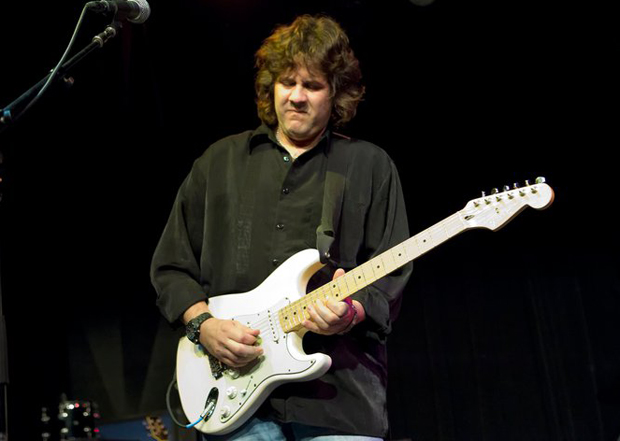
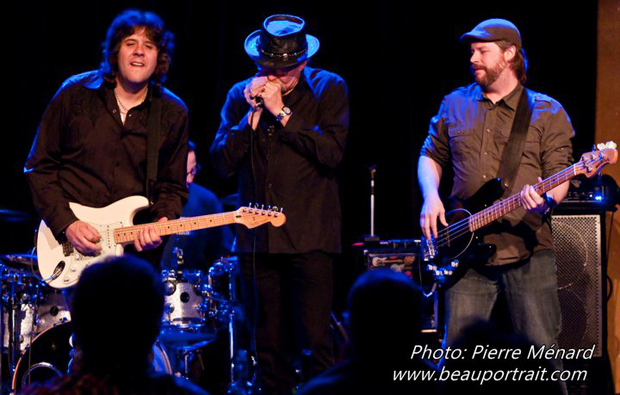
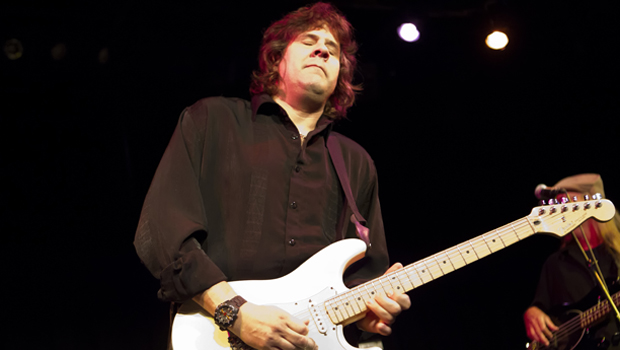
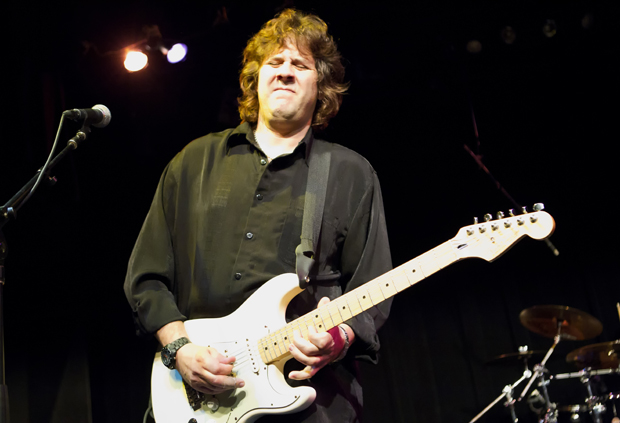
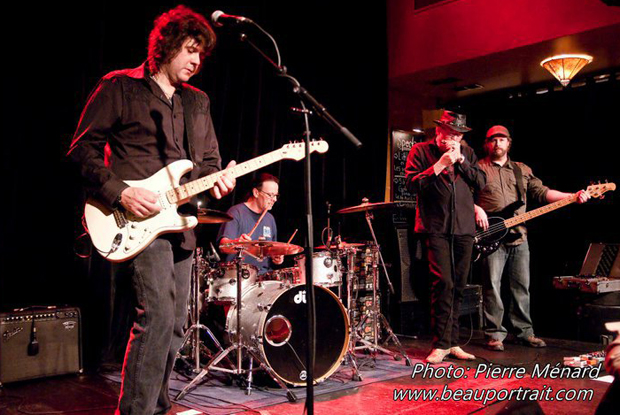
Alison Richter is a seasoned journalist who interviews musicians, producers, engineers, and other industry professionals, and covers mental health issues for GuitarWorld.com. Writing credits include a wide range of publications, including GuitarWorld.com, MusicRadar.com, Bass Player, TNAG Connoisseur, Reverb, Music Industry News, Acoustic, Drummer, Guitar.com, Gearphoria, She Shreds, Guitar Girl, and Collectible Guitar.
“There’d been three-minute solos, which were just ridiculous – and knackering to play live!” Stoner-doom merchants Sergeant Thunderhoof may have toned down the self-indulgence, but their 10-minute epics still get medieval on your eardrums
“There’s a slight latency in there. You can’t be super-accurate”: Yngwie Malmsteen names the guitar picks that don’t work for shred
![A black-and-white action shot of Sergeant Thunderhoof perform live: [from left] Mark Sayer, Dan Flitcroft, Jim Camp and Josh Gallop](https://cdn.mos.cms.futurecdn.net/am3UhJbsxAE239XRRZ8zC8.jpg)









